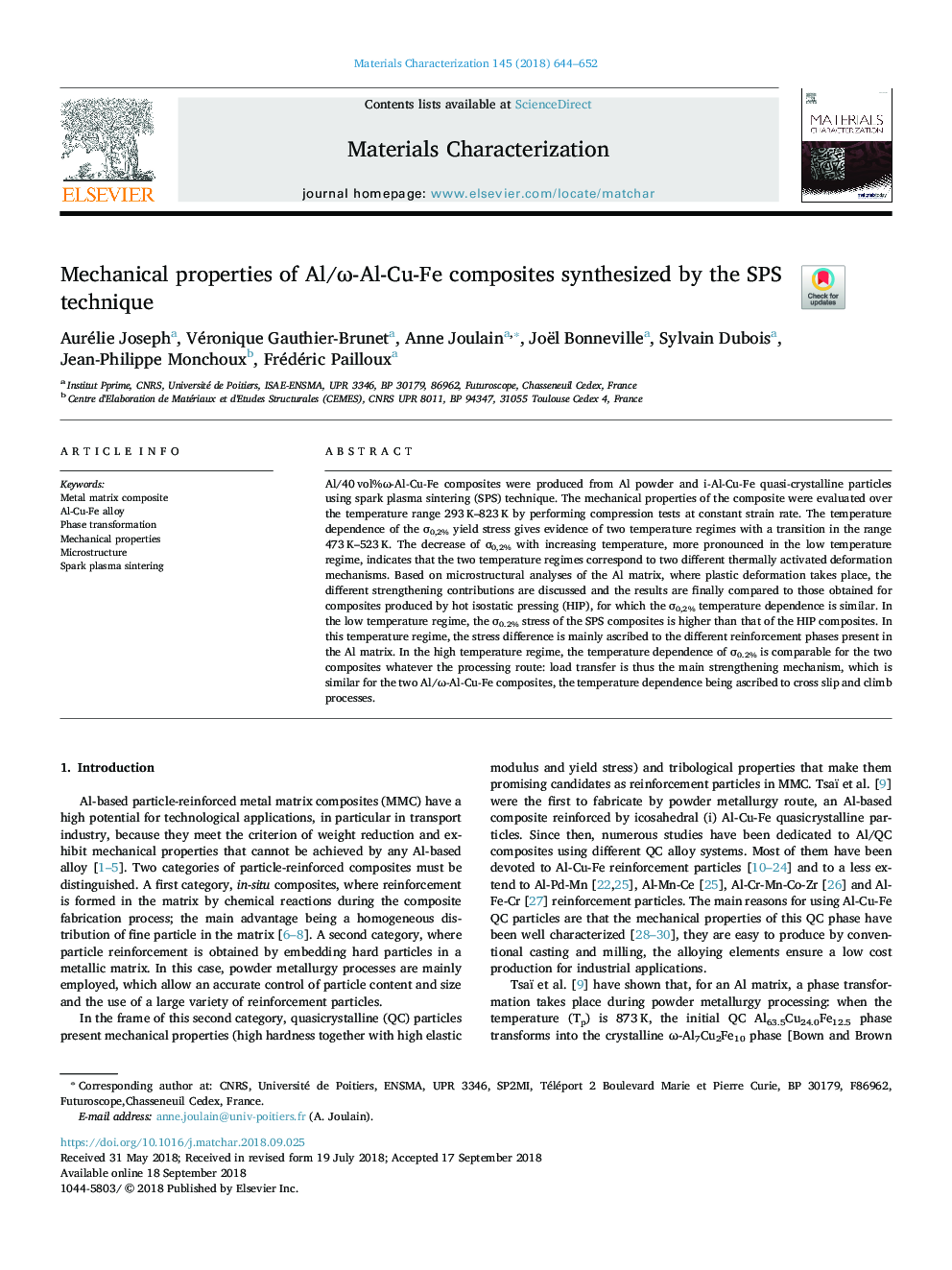| Article ID | Journal | Published Year | Pages | File Type |
|---|---|---|---|---|
| 11032792 | Materials Characterization | 2018 | 9 Pages |
Abstract
Al/40â¯vol%Ï-Al-Cu-Fe composites were produced from Al powder and i-Al-Cu-Fe quasi-crystalline particles using spark plasma sintering (SPS) technique. The mechanical properties of the composite were evaluated over the temperature range 293â¯K-823â¯K by performing compression tests at constant strain rate. The temperature dependence of the Ï0,2% yield stress gives evidence of two temperature regimes with a transition in the range 473â¯K-523â¯K. The decrease of Ï0,2% with increasing temperature, more pronounced in the low temperature regime, indicates that the two temperature regimes correspond to two different thermally activated deformation mechanisms. Based on microstructural analyses of the Al matrix, where plastic deformation takes place, the different strengthening contributions are discussed and the results are finally compared to those obtained for composites produced by hot isostatic pressing (HIP), for which the Ï0,2% temperature dependence is similar. In the low temperature regime, the Ï0.2% stress of the SPS composites is higher than that of the HIP composites. In this temperature regime, the stress difference is mainly ascribed to the different reinforcement phases present in the Al matrix. In the high temperature regime, the temperature dependence of Ï0.2% is comparable for the two composites whatever the processing route: load transfer is thus the main strengthening mechanism, which is similar for the two Al/Ï-Al-Cu-Fe composites, the temperature dependence being ascribed to cross slip and climb processes.
Keywords
Related Topics
Physical Sciences and Engineering
Materials Science
Materials Science (General)
Authors
Aurélie Joseph, Véronique Gauthier-Brunet, Anne Joulain, Joël Bonneville, Sylvain Dubois, Jean-Philippe Monchoux, Frédéric Pailloux,
